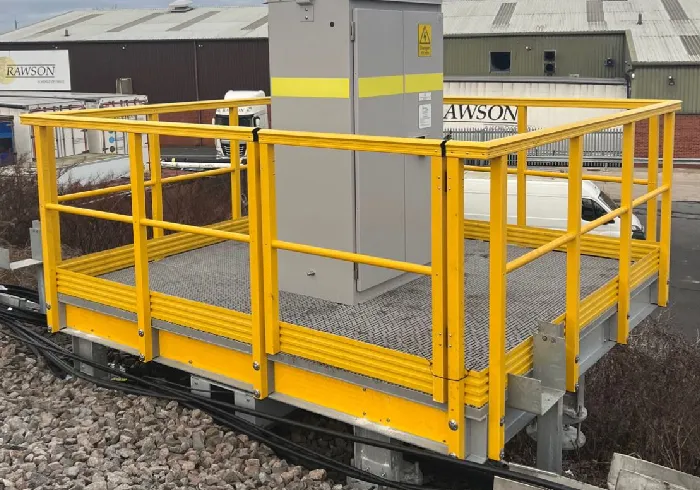loading...
- No. 9, Xingyuan South Street, Dongwaihuan Road, Zaoqiang County, Hengshui, Hebei, China
- admin@zjcomposites.com
- +86 15097380338
- Welcome to visit our website!
Exploring the Benefits and Applications of FRP in Water Tank Construction and Design Techniques
Understanding FRP Water Tanks A Durable Solution for Storage
In various industrial and agricultural sectors, the need for effective water storage solutions is paramount. One innovative and increasingly popular option is the Fiber Reinforced Plastic (FRP) water tank. This article will explore the benefits, applications, and key features of FRP water tanks, underscoring their significance in modern water storage systems.
What is FRP?
Fiber Reinforced Plastic, commonly referred to as FRP, is a composite material that consists of a polymer matrix reinforced with fibers, typically glass or carbon. This unique combination results in a lightweight yet incredibly strong material that boasts excellent corrosion resistance, making it particularly suitable for water storage applications.
Advantages of FRP Water Tanks
1. Corrosion Resistance One of the most significant advantages of FRP water tanks is their exceptional resistance to corrosion. Unlike traditional materials like steel or concrete, FRP does not succumb to rust or decay, thus ensuring longevity and reducing maintenance costs. This characteristic is especially beneficial in environments where chemical exposure is a concern.
2. Lightweight and High Strength FRP is notably lighter than conventional materials, which simplifies transportation and installation. Despite its lightweight nature, FRP exhibits remarkable tensile strength, allowing it to withstand considerable pressure and external forces. This makes it an ideal choice for large-scale water storage solutions.
3. Versatility in Design FRP water tanks can be manufactured in various shapes and sizes, offering flexibility to meet specific storage needs. Whether for domestic use, industrial applications, or agricultural purposes, FRP tanks can be customized to fit the required volume and site constraints.
water tank frp

4. Thermal Insulation These tanks provide excellent thermal insulation properties, helping to maintain the temperature of stored water. This is particularly beneficial in regions with extreme temperature fluctuations, as it preserves water quality and minimizes energy costs for heating or cooling processes.
5. Environmentally Friendly FRP materials are often considered more environmentally friendly compared to their counterparts. They can be produced with recyclable materials and, due to their durability, lead to less waste over time.
Applications of FRP Water Tanks
FRP water tanks find applications across diverse industries. In agriculture, they are commonly used for irrigation, livestock watering, and fertilizer storage. In residential settings, these tanks are ideal for rainwater harvesting systems or as a part of a household plumbing system. The chemical industry also benefits from FRP tanks, as they are suitable for storing a variety of liquids, including corrosive chemicals, without the risks associated with metal tanks. Additionally, these tanks are utilized in fire protection systems, where reliable water supply is critical.
Maintenance and Longevity
Maintaining an FRP water tank is relatively straightforward. Regular inspections for any signs of wear or damage, along with cleaning the tank to prevent algae growth, can ensure the longevity of the tank. With proper care, FRP water tanks can last several decades, providing a reliable water storage solution.
Conclusion
In summary, FRP water tanks represent a modern approach to water storage that combines durability, versatility, and efficiency. Their corrosion resistance, lightweight structure, and ability to withstand various environmental conditions make them a preferred choice for a range of applications. As industries continue to prioritize sustainability and efficiency, the role of FRP water tanks is likely to expand, offering a practical solution to meet the growing demands for effective water management.
-
GRP Structures: The Future of Lightweight, High-Performance EngineeringNewsJun.20,2025
-
FRP Water Tank: High-Performance Storage for Corrosive and Clean Water SystemsNewsJun.20,2025
-
FRP Square Tube: The New Industry Standard for Chemical and Structural ApplicationsNewsJun.20,2025
-
FRP Pultruded Profiles: The Ultimate Choice for Lightweight Structural StrengthNewsJun.20,2025
-
FRP Handrails: The Safer, Smarter, and Stronger Choice for Modern InfrastructureNewsJun.20,2025
-
FRP Grating: The Smart Solution for Durable, Lightweight Industrial FlooringNewsJun.20,2025
-
Why Choose a Galvanized Water Tank for Your Storage NeedsNewsMay.21,2025
